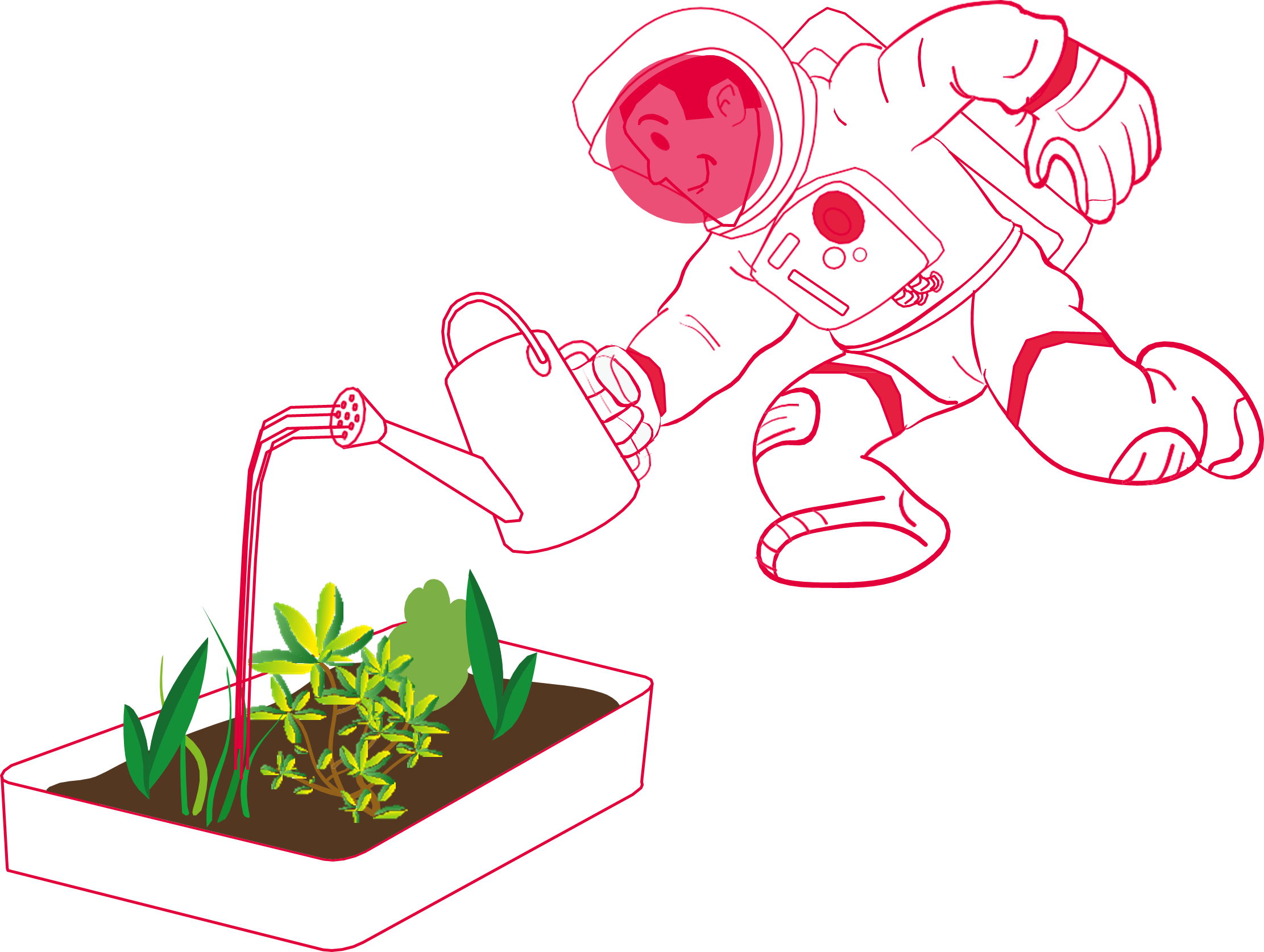AstroFarmer – Learning about conditions for plant growth
In this set of six activities, students will investigate which factors affect plant growth, and relate these factors to growing plants in space.
Students will learn that plants need air, light, water, nutrients and a stable temperature to grow.
Students will observe what happens to plants when they vary some of these factors. These six activities can be done individually or as a set.
Learning Objectives
- Learn that plants need water, light, air, nutrients and a suitable temperature to grow.
- Understand that environments can change and pose danger to living things.
- Learn that it is possible to grow plants without soil.
- Conduct simple and fair tests.
- Identify and control variables when necessary.
- Interpret observations and draw conclusions.
- Solve problems.
Age range:
8 – 12 years old
Time
Lesson: 2 hours and 30 minutes
Resource available in:
Activity 1: Do plants need air?
In this activity, students will learn about respiration and photosynthesis in plants. Students will also learn about the composition of air and understand the role of plants in teh production of oxygen.

Equipment

Activity 2: Do plants need light?
In this activity, students will investigate how cress grows in different lighting conditions: constant darkness and normal sunlight. Students should understand that ligth affects the growth of plants and relate the results from this experiment to Activity 1.

Equipment
Activity 3: Do plants need water?
In this activity, students will investigate the transportation of water inside a plant. Through these exercises, students should understand that the roots and stem transport water to the rest of the plant. Afterwards, students will examine how flower petals change colour when dye is added to the plant water.

Equipment
Activity 4: Do plants need soil?
In this activity, students will plant radish seeds in different materials to determine which are good for growing plants.

Equipment
Activity 5: Too hot, too cold
In this activity, students will observe pictures from different places on Earth and link them to the different climate zones. Students will learn that plants can adapt to different conditions but there are extreme environments where they cannot live.
Equipment
Activity 6: Plants in Space
In this activity, students will summarise the most important conditions that are needed fro plants to be healthy. Students will consider what conditions on the Moon could pose a problem for plants.
Equipment
Did you know?
For most plants the optimum temperature for photosynthesis is around 25 ºC. The effect of temperature on plants varies widely depending on their type.
Tomatoes get into trouble when temperatures drop below 13 ºC, or if temperatures exceed about 36 ºC. Cacti, on the other hand, can survive in the desert where temperatures range from below zero, up to around 70 ºC.
Tomatoes get into trouble when temperatures drop below 13 ºC, or if temperatures exceed about 36 ºC. Cacti, on the other hand, can survive in the desert where temperatures range from below zero, up to around 70 ºC.

Keywords:

ISS Commander’s Log with Andreas Mogensen
ISS Commander’s Log with Andreas Mogensen The ISS is a laboratory, where we can conduct scientific research and technology development. The scientific research broadens our

Bionic Hand – Building a bionic hand
Brief description: In this activity, pupils will build a bionic hand made out of cardboard, strings, straws and rubber bands. They will relate the bionic

AstroCrops – Growing plants for future space missions
Brief description: In this set of activities, students will build an understanding of germination and plant growth by following the development of three unknown plants



